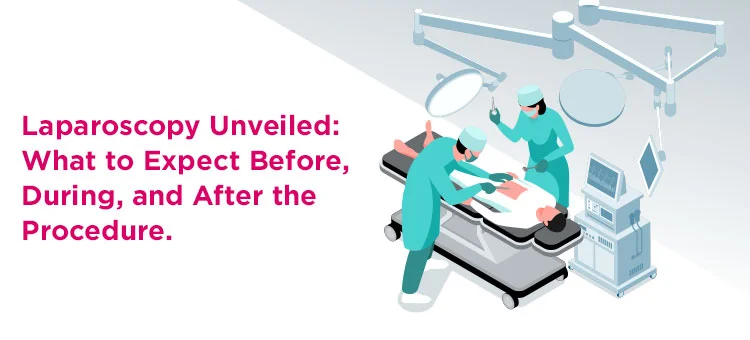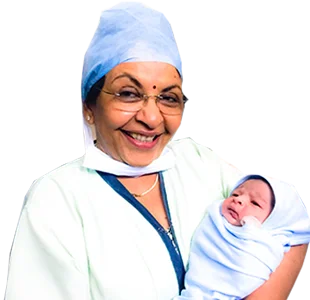Laparoscopy surgery is a minimally invasive procedure done when you face any issues in your abdomen and pelvis.
Laparoscopy involves making small incisions and using specialized instruments and a camera to visualize and operate on internal organs.
Let's see what to expect before, during, and after the laparoscopic surgery.
Before the Procedure:
Before undergoing laparoscopic surgery, patients typically undergo a thorough evaluation by their specialist, this may include a physical examination, reviewing associated medical history, and diagnostic tests such as blood tests and imaging studies to ensure good health. Your doctor will also provide specific instructions on how to prepare for the procedure, which may include: fasting before the surgery, pre-anesthetic medications, and pre-operative instructions.
During the procedure:
Laparoscopy is typically a pain-free procedure as it is performed under general anaesthesia. Small incisions, usually less than half an inch in length, are made in the abdomen. These incisions are used to insert laparoscopes and other surgical instruments.
Gaseous substances like carbon dioxide are pumped into the abdomen to create space and improve visibility for the surgeon. Any other instruments can also be inserted through the other incisions to monitor or view the internal organs.
Incisions are properly closed with sutures or surgical tapes after the surgery.
After the Procedure:
Once the procedure is completed and you emerge from anaesthesia, your vital signs will be closely monitored in the recovery area. It is very normal to experience minor discomfort or soreness near the incision sites during this time. The medical team will be there to ensure your comfort and safety.
Pain Management is The Next Step!
Managing pain effectively is crucial for a smooth recovery. Your doctor may prescribe painkillers to help alleviate any discomfort you may experience following surgery. It is essential to follow your doctor’s instructions regarding medication dosage and frequency to optimize pain relief while minimizing potential side effects.
A Strict Diet to Follow!
Proper nutrition plays a vital role in the healing process. Your surgeon will likely recommend a specific diet plan planned according to your individual needs to support optimal recovery. Following dietary guidelines can help speed up the healing process and enhance your overall well-being.
Follow-Up Appointments:
After surgery, your journey to recovery doesn’t end once you leave the hospital. Your surgeon will schedule follow-up appointments to monitor your progress and make sure that you are healing properly. These appointments provide an opportunity to address any concerns or questions you may have and to make any necessary adjustments to your treatment plan. Let’s explore some of the key benefits of laparoscopic surgery:
- Smaller scars
- Quicker hospital stay: laparoscopic surgery typically allows for shorter hospital stays compared to traditional surgery due to its minimally invasive nature.
- Reduced pain: Smaller incisions in laparoscopic surgery result in less tissue trauma, leading to reduced post-operative pain. As a result, patients experience less discomfort during the healing process and may require less pain medication to manage their symptoms.
- Faster recovery
- Less internal scarring:It has less internal scarring than traditional open surgery.
- Reduced risk of complications
- Lower pain medication requirement: Due to the reduced post-operative pain associated with laparoscopic surgery, patients typically require less pain medication during their recovery period. This not only minimizes the risk of medication-related side effects but also promotes a faster and smoother recovery process.
In recent years, the landscape of surgery has been transformed by remarkable advancements in laparoscopic tools. At Belle Vue's Cambridge Hospital, we are proud to offer cutting-edge laparoscopic procedures that have made far-reaching changes in the way complex surgeries are approached


